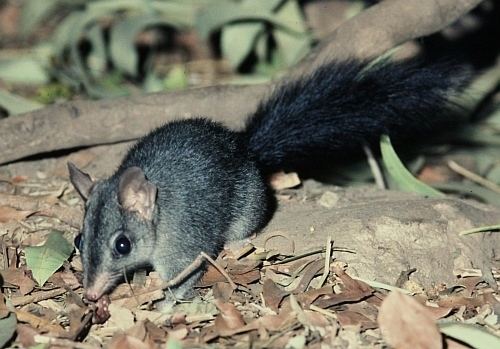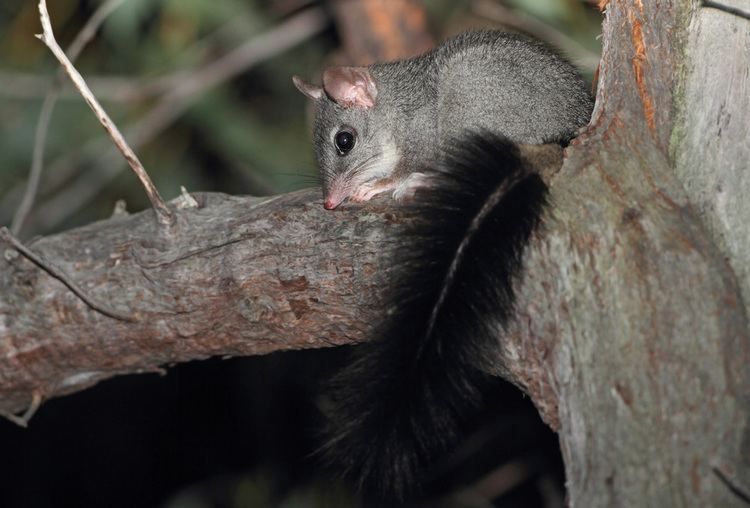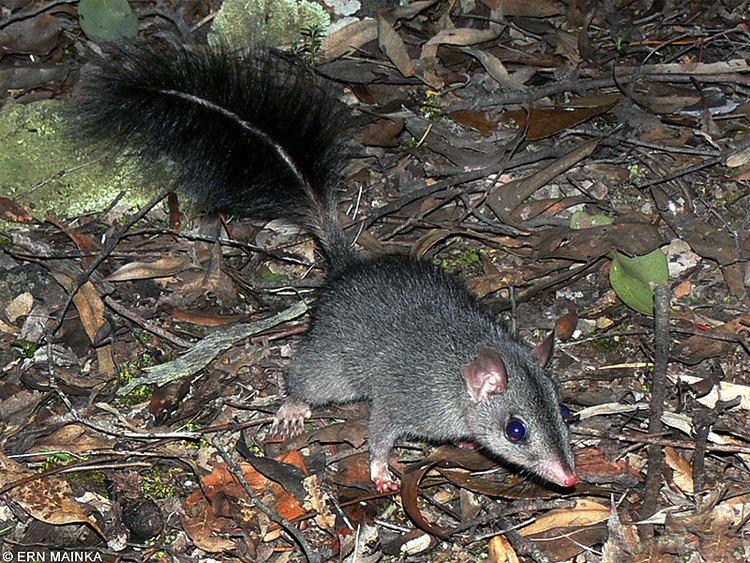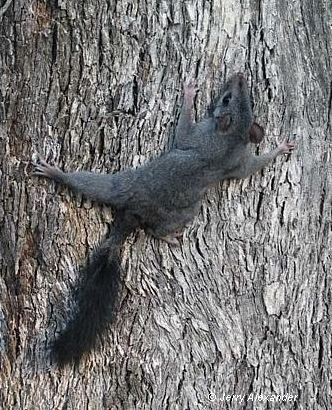Rank Species | Phylum Chordata Higher classification Phascogale | |
 | ||
Similar Phascogale, Mammal, Marsupial, Red‑tailed phascogale, Dasyurids | ||
Cute brush tailed phascogale
The brush-tailed phascogale (Phascogale tapoatafa), also known by its Australian native name tuan, the common wambenger or the black-tailed phascogale, is a rat-sized arboreal carnivorous marsupial of the family Dasyuridae, characterized by a tuft of black silky hairs on the terminal portion of its tail. Males of this species do not live past the age of one, as they die after reproducing.
Contents
- Cute brush tailed phascogale
- Good news for brush tailed phascogale breeding season in wombat forest
- Taxonomy
- Description
- Distribution and habitat
- Diet
- Reproduction
- References

Good news for brush tailed phascogale breeding season in wombat forest
Taxonomy

The brush-tailed phascogale was first described by F. Meyer in 1793; George Shaw published a revised description in 1800. For some time it was considered a member of the opossum genus Didelphis, but this ended in 1844 when Coenraad Jacob Temminck erected the genus Phascogale. The species is closely related to the red-tailed phascogale (P. calura). Its scientific name, tapoatafa, is a reference to an indigenous Australian name for the species. It has sometimes been known as Phascogale penicillata, referring to its brushed tail. In 2015 three subspecies were identified, and the previous subspecies P. t. pirata was confirmed as a separate species P. pirata:

The subspecies that the population in Cape York Peninsula represents has yet to be identified.
Description

This phascogale is black. Its tail is covered with long black hairs on the lower half that can erect, causing it to appear similar to a bottle brush.
Body length is between 16 and 27 cm (6.3 and 10.6 in) with a 16 to 24 cm tail. Males, which can reach up to 310 grams (11 oz), are larger than females, normally weighing less than 210 g.
Distribution and habitat
The brush-tailed phascogale has a widespread but fragmented distribution throughout all states of Australia, excluding Tasmania. As a result of habitat destruction and predation by the red fox and feral cat, they are believed to have disappeared from roughly half of their former range. The species is considered very vulnerable to localised extinction.
It is listed as a vulnerable species on Schedule 2 of the Threatened Species Conservation Act, 1995 (TSC Act, NSW). However the IUCN Red List lists it only as near threatened, and it does not have an EPBC Act status.
Diet
This species is a nocturnal and arboreal hunter. It eats smaller mammals, birds, lizards, and insects, particularly spiders. It also drinks nectar from flowering trees.
Reproduction
Breeding occurs between June and August when the females come into estrus. All male brush-tailed phascogales die before reaching one year of age, generally from stress-related diseases brought about by the energy expended in a bout of frenzied mating. However, some captive males have lived to the age of three, though they were reproductively unviable after the first year. Females nest in hollow trees, bearing litters of 7 to 8 young which stay in the nest to the age of 5 months.
